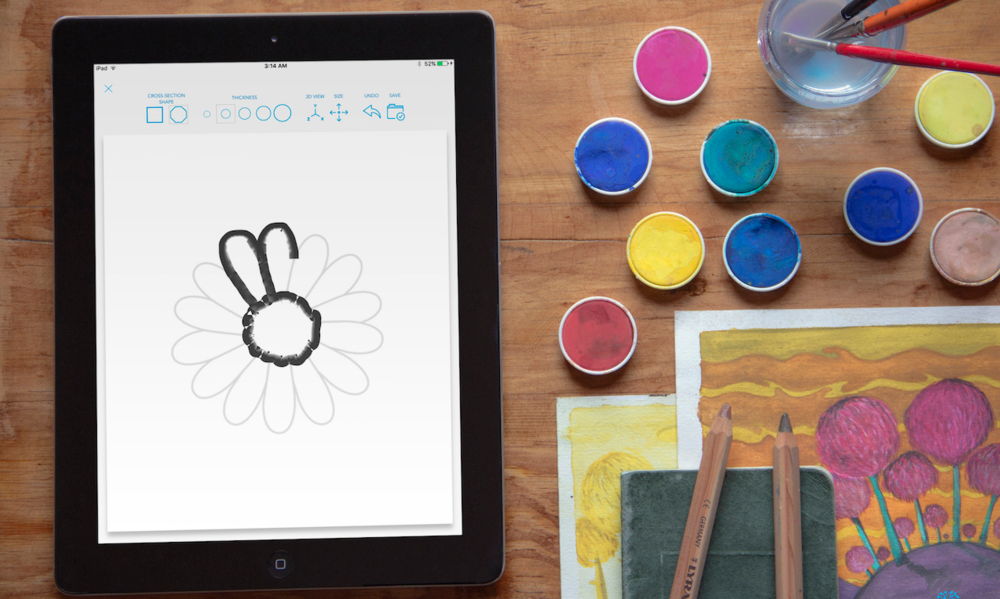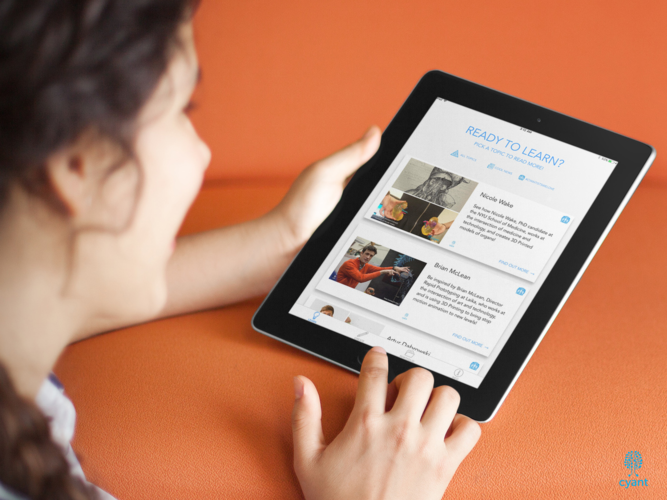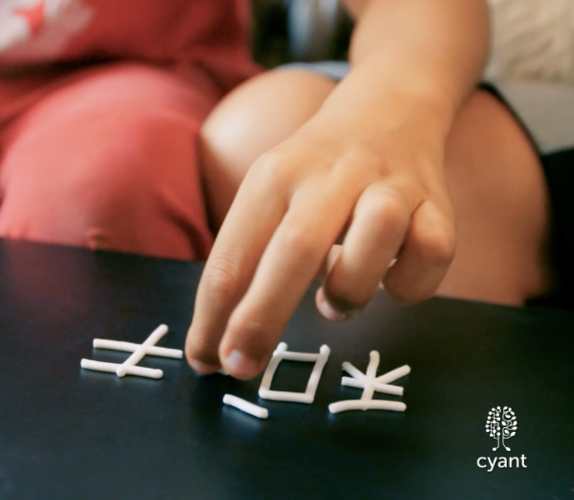Building the future of 3D Modeling Software: Meet Cyant’s Founder
Posted By Amandine Richardot on Oct 17, 2017 | 0 comments
Creating a 3D modeling software that is easy to use is a major challenge. Barbara Hanna clearly understood it, and that’s one of the many challenges she decided to work on. After first creating Cyant to create new educational tools, she then developed Cyant’s Lab™, a 3D modeling software for kids of all ages, based on 2D drawing. But since a 3D model is even greater when it becomes a real object, she decided to partner with Sculpteo. All of your creations can directly be 3D printed through our 3D printing service, in a few clicks from the app, that you can download here! We had a chat with Barbara to discuss the challenges of creating a 3D modeling software, the massification of 3D printing and what this technology can bring to education.
First, can you introduce yourself and Cyant to us?
Hi, I am Barbara Hanna, CEO and founder of Cyant. Cyant’s mission is to foster learning, creativity, and engagement. We are currently developing a product, Cyant’s Lab™, and services to make 3D modeling, 3D Printing and related technologies intuitive and accessible, both from the creation and the learning standpoints. We are particularly focused on connecting art and technology in whatever we do, as the art-technology connection creates a wonderful gender neutral and fun playground for engaging users in all sorts of activities.
Can you describe your product Cyant’s Lab™?
We have just released Cyant’s Lab™ on the App Store, so we are very excited to share about it! Cyant’s Lab™ is an app, currently available for iPad, that enables kids of all ages to create 3D models by simply drawing and writing. The app automatically turns those drawings and writings into models. Users can choose to free draw or use templates as guides. And since not everyone has a 3D printer, 3D Prints of the models can be ordered via Sculpteo.
The app also provides educational and inspirational articles to learn more about 3D printing and related technologies. So Cyant’s Lab™ can be used to very easily create and 3D print designs, from ornaments to components of more involved arts or crafts projects, as well as in educational activities.
Why did you choose to use Sculpteo’s services in Cyant’s Lab™?
We wanted to make sure that our users could order 3D prints if they did not have access to a 3D printer, so we knew we had to integrate a 3D printing service in Cyant’s Lab™. We started testing with Sculpteo early on in our design and development phase, and all our tests and experiences with Sculpteo’s 3D prints clearly showed the quality of the prints and the fulfillment process. We knew our users would be happy.
In addition, Sculpteo’s ordering interface provides a great selection of materials, colors and model previews. Our users can, therefore, have access to a range of options and experiment with them. They can also get a feel for what their 3D print will look like, or whether it might contain issues and need redesigning, before placing the order.
Which 3D printing technology do you usually work with, and why?
We have worked with a number of 3D printing technologies and materials over time but particularly with FDM for educational purposes. FDM is conceptually easy to explain and the most prevalent technology in desktop printers. There is also a great selection of materials, including eco-friendly ones. In fact, from a sustainability angle, FDM is also interesting, increasingly driving plastic re-use and closed-loop initiatives.
However, models created with Cyant’s Lab™ can be printed via a range of other technologies, such as binder jetting, SLS and SLA for example, and a range of materials including metal, as our work with Sculpteo has shown. And on a personal note, I am also excited about newer technologies, such as Carbon’s CLIP (DLS), which is already disrupting a number of industries.
Do you think a lack of knowledge in 3D modeling is the biggest barrier to the massification of the use of 3D printing?
Among the 3D modeling software options available, many are generally aimed at skilled professionals and digital artists, and the Computer Aided Design perspective is quite prevalent in the user experience. We created Cyant’s Lab™ because we felt that there was still a gap, particularly for some age groups and user categories, in technology accessibility and literacy. We also wanted to make sure that our product was inclusive and helped foster diversity. So from that perspective, yes, a more accessible 3D modeling experience is one of the keys to involving more people in the industry.
This being said, this will not be the only factor in expanding the use of 3D Printing to mass scale. There are a number of other forces at play, including cost factors, materials, and technologies available, design and technology literacy, drive and demand for new methods of design and production, expansion of mass customization, for example. The past few years have been quite indicative of that, looking at how various industries and brands have adopted the technology.
How do you think 3D printing can bring value to education?
3D Printing was very appealing to me from day one for its educational value due to many reasons. First, it is a wonderful bridge between the physical and digital worlds. As human beings, we need to be able to navigate between those worlds, and this is even more true for kids. So this opens the door to new educational and multi-sensorial experiences.
3D Printing also inherently encourages the intersection between design on the one hand, and technology and engineering on the other. On that note, we are strong proponents of the STEAM learning framework, through Cyant’s Lab™ and other activities such as workshops. Importantly, 3D Printing is a technology field which is already shaping the future of many industries, so education and training around 3D Printing will become increasingly important for job readiness in a number of professional areas. And
And finally, 3D Printing promotes interdisciplinary work and collaborations. This has struck me from very early on. We have been showcasing “#CyantistsWeLove”, professionals who exemplify that very multidisciplinary nature of the field, and their work, on our site and in Cyant’s Lab™, to provide concrete examples and inspiration in that regard. There is a lot to discuss on that topic, including how 3D printing can be used to foster education around sustainable design and production practices, but I think this would warrant a whole interview in itself!
What are the next steps for Cyant?
The focus is primarily on Cyant’s Lab™ right now. Stay tuned for upcoming announcements!
Anything else you’d like to add?
Along with partner Nora Toure, GM at Sculpteo USA, and founder of Women In 3D Printing, I have co-founded and have been growing #3Dtalk, a monthly educational and industry-specific event series. Each #3DTalk features a panel of women who are experts in various verticals of 3D Printing and share in-depth knowledge and insights. This continues to advance Cyant’s mission to foster education and learning, and our commitment to help empower women in the field, and I am thrilled to be working with Nora on this. We have now held #3DTalks in San Francisco, New York City, Paris, Birmingham and soon San Diego on a range of topics and we’re excited about more upcoming events coming soon! We have already begun to plan 2018 and I invite everyone to visit the event website www.3DTalk.tech and Facebook page to keep updated!
We hope you enjoyed this interview! Interested in 3D modeling software? Discover our various blogposts about this topic, helping you to find the right one for your 3D design needs, like Top 20 of the best free CAD software or Top 8 CAD software for kids.


 Connect with Google
Connect with Google Connect with Facebook
Connect with Facebook

